Stance appears to be one of the most important aspects of Taekwondo. A good stance varies on the situation and the intention. This stance is good to get ready for combat, while basic Taekwondo stances can help you with proper technique and posture.
Since the varied positions in Taekwondo call for flexible movement, wearing the best Taekwondo shoes can provide the necessary comfort and help you maintain good posture during the different forms.
This article will focus on the most important stances of ancient Korean martial art. We will go through almost every single position in Taekwondo forms. You can see the majority of them in WTF and ITF Taekwondo.
ATTENTION STANCE
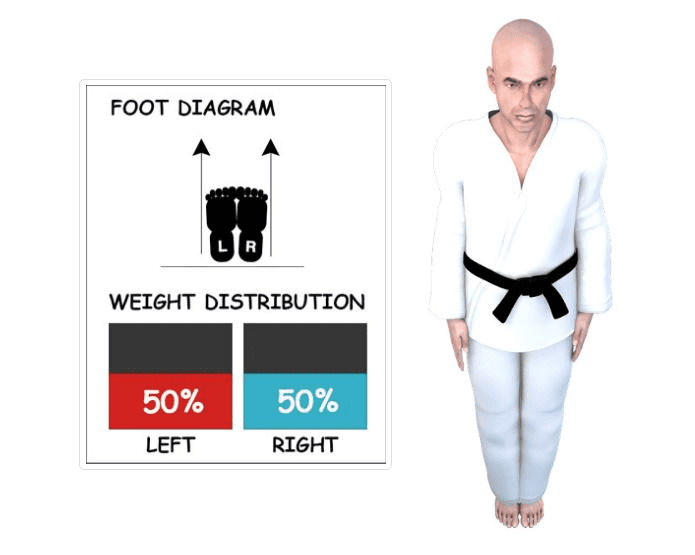
You will see attention stance before the fight or every bow. Attention stance is asked of the pupils before they perform a Taekwondo form. Before the tournament combat, the referee demands an attention stance before the two fighters bow to each other as a sign of respect.
Legs side by side, your body is in an upright standing position, hands parallel to your body, toes pointing straight forward, heels touching. The Korean name for the attention stance is charyeot ( 차렷 ).
READY STANCE
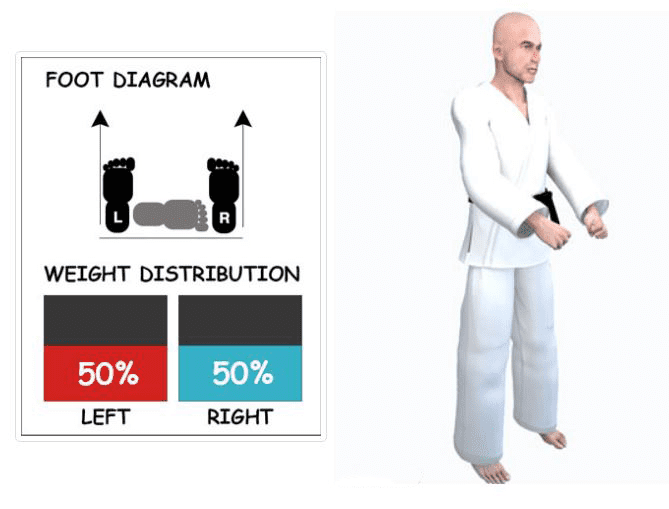
Ready stance is also an intro to the combat or kata, as the ref says attention stance – bow – ready stance before the bout gets underway (in Korean, of course). It is one of the most basic Taekwondo stances.
You must stand still with your feet apart, parallel stance, arms slightly bent, and legs extended. Hold your fists tightly, slightly below the belly button, and make sure your fists are about one fist size away from your stomach. The Korean name is (기본준비) junbi.
WALKING STANCE
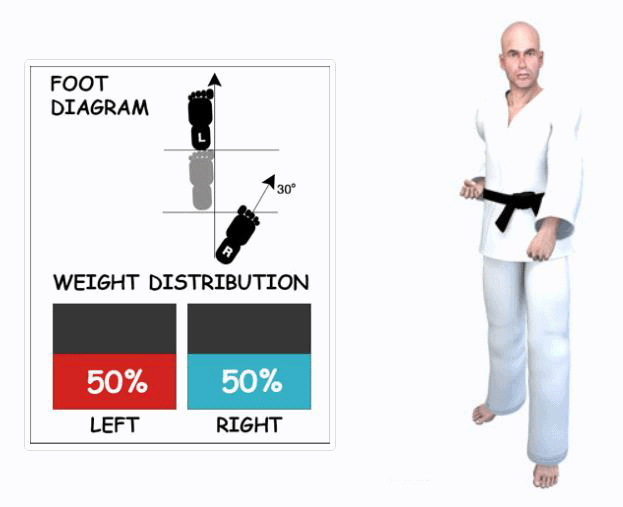
A walking stance is very important in many Taekwondo forms. The yellow belt forms and higher are stacked with a walking stance and all kinds of offensive and defensive maneuvers.
A walking stance is also widely used in combat to defend or retreat, but you can also do some basic attacks from it. The Korean name for one of the most basic stances is (앞서기) ap-sogi.
There should be a 3-foot distance between your feet, your front foot facing forwards, while your back foot is rotated 30 degrees to the outside. Both legs are straight, while your body is rotated 45 degrees to the outside, depending on whether you’re an orthodox or a southpaw.
FRONT STANCE
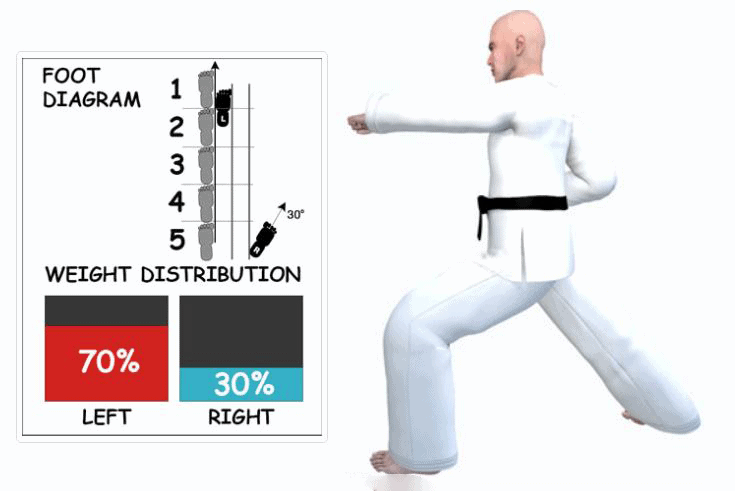
Front stance (ap kubi) belongs to the family of long-range Taekwondo stances, and it can help you decrease the range between you and your opponent and punch him with a powerful fist to the body.
The front stance is a precursor of a fighting stance, so your body should be in a relaxed position. Place one foot straight ahead of the other one. You can slightly step to the side to open the angle (depending on your fighting style, it helps you improve the power of your counterstrike). The Korean name is (앞굽이) ap-kubi.
BACK STANCE
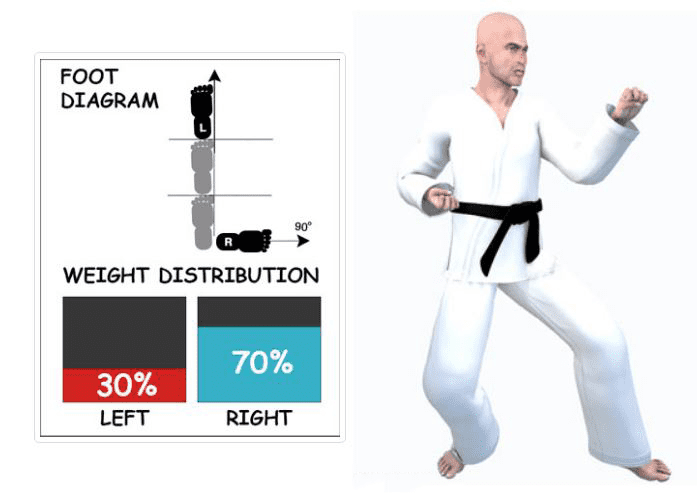
You can see the back stance in higher belt forms. It can save you from violent strikes, but it is not much recommended in combat, especially when your opponent attacks with spinning strikes. But it works for front-kick counters.
The back stance looks like this: shift your weight to the back leg, knees bent slightly, the body faces to the side, front foot facing forwards, while the back knee is also slightly bent. The foot of the rear leg should remind of the letter L, the foot pointed sideways. The Korean name for the back stance is (뒷굽이 dwi-kubi).
CAT OR TIGER STANCE
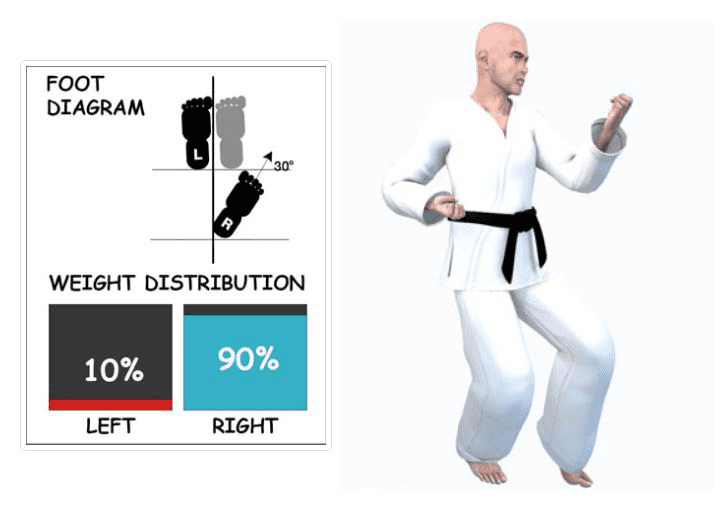
Tiger stance is good for sneaky attacks. It reminds a bit of a cat before she attacks the prey, so you can also call it a cat stance.
Your back foot is turned 30 degrees to the outside, your lead foot facing forward. Do not spread your knees apart, and shifting weight distribution is – 90% back leg, 10% lead leg. Slightly bent knees. Congrats, your cat stance (or tiger stance) is ready! Some even call it the L stance because your thighs and calves shape the letter L.
COVERED FIST READY STANCE
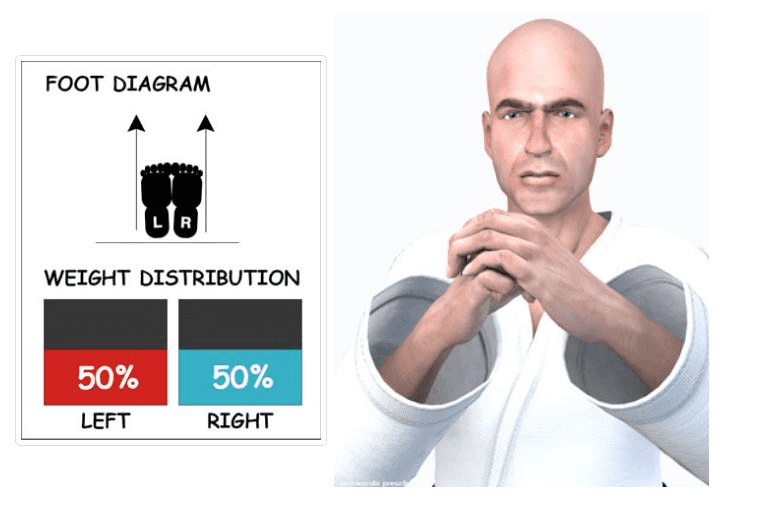
Assume an upright standing body position, legs side by side, heels touching each other. Toes are facing forward, cover your right fist with the inner area of your left palm. Level your elbows with your liver. Focus your energy on your right hand for the perfect covered fist ready stance (보주먹준비 bojumeok-junbi).
FORWARD CROSS STANCE
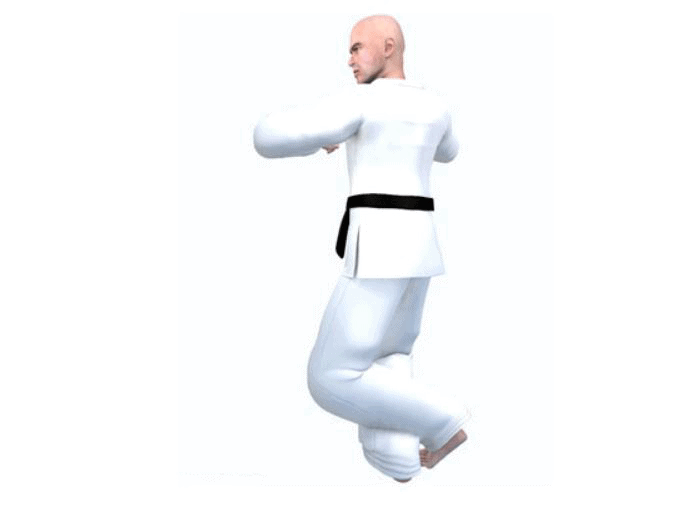
It is one of the best ways to move sideways, you will notice it in red belts and higher katas. Many Taekwondo athletes perform these moves in the fight.
Draw your left (front foot) sideways over the front of your right foot, placing the sole of your right (back leg) flat onto the mat. Cross your legs, back foot is angled at around 30 degrees for the perfect stance ( 앞 꼬아서기 ap-koa-sogi ).
REAR CROSS STANCE
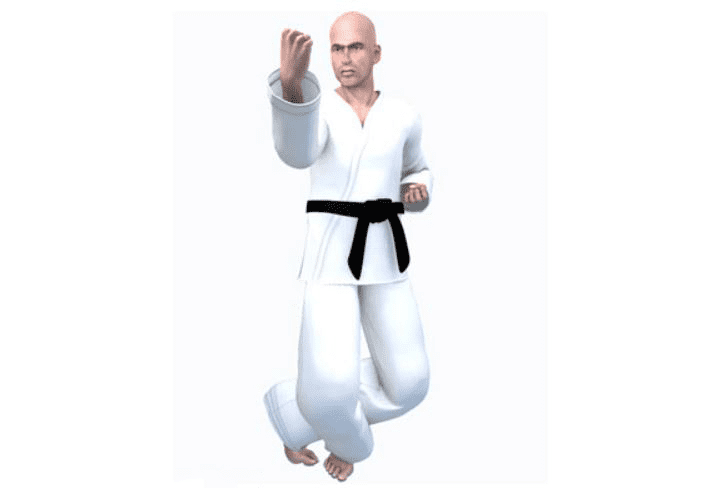
There is a lot of similarity with the forward cross stance, with two significant differences – your weight is shifted to your rear leg, and the back leg is supported by the balls of the foot. If done properly, the back foot should support the central line of your body. The Korean name for rear cross stance is (뒤 꼬아서기 dwi-koa-sogi).
LEFT SIDE STANCE
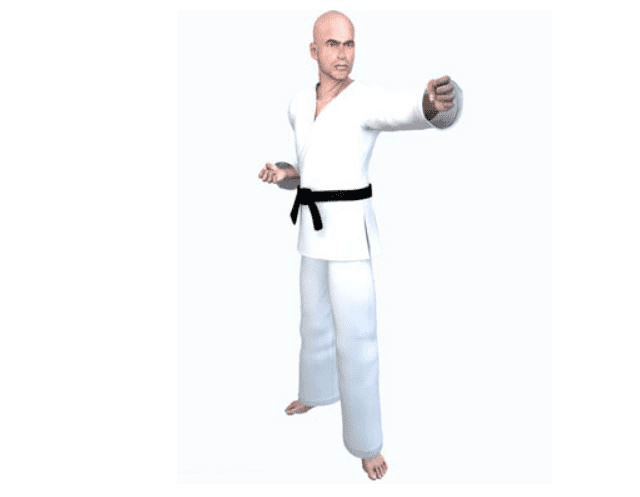
One of the Taekwondo stances from the red belt form. Pivot your left heel 90 degrees to the left from a parallel stance, while your right foot’s facing forward. Your left arm is at the level of your shoulder, clench your fists, right fist on the liver. Weight distribution – even. The Korean name is (왼 서기 wen-sogi).
RIGHT SIDE STANCE
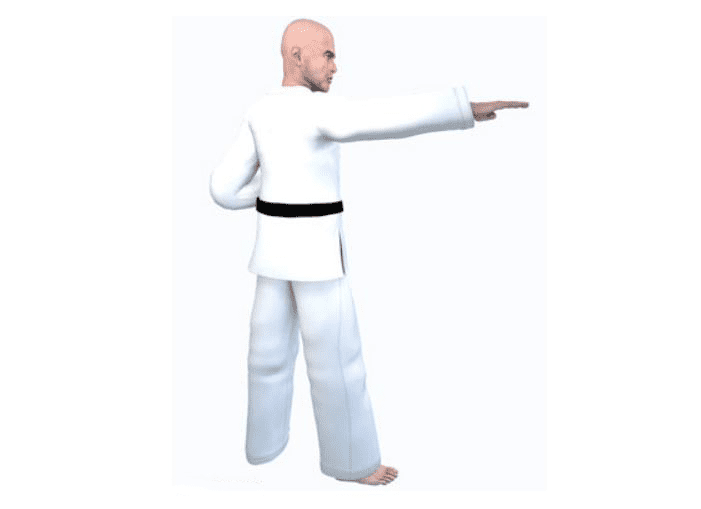
Just mirror your left-side stance for the perfect right-side stance, easy as that. The Korean name is (오른 서기 oreun-sogi).
TWO FIST READY STANCE
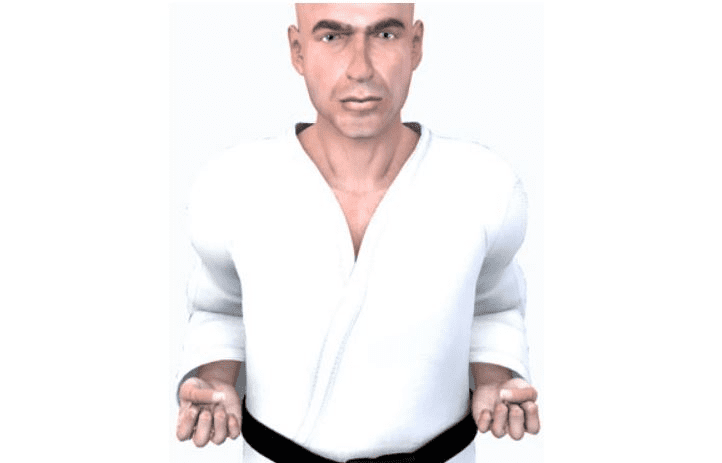
Put both hands on your hips, and clench your fists. You are in a parallel stance and the body weight is evenly distributed on both feet. Toes pointing straight forward, legs fully extended. The Korean name for this move is 두주먹허리준비 (dujumeok-heori-junbi).
CRANE STANCE
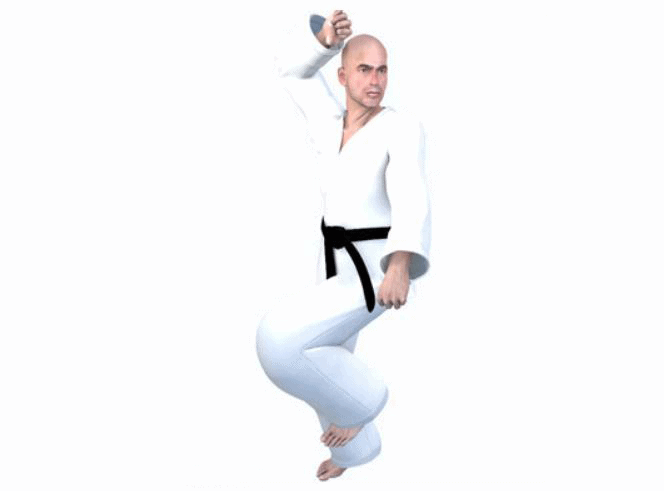
Try to lift one foot off the mat and place the balls of the foot on the inner side of your other knee. Then bend both knees, and lower your body weight. It reminds me a bit of a riding stance. Raised knee and the foot on the floor are facing forward.
Crane stance is one of the advanced Taekwondo stances, seen in black belt forms (sidekicks). The Korean name for crane stance is 학다리서기 (hakdari-sogi).
INNER KNEE STANCE
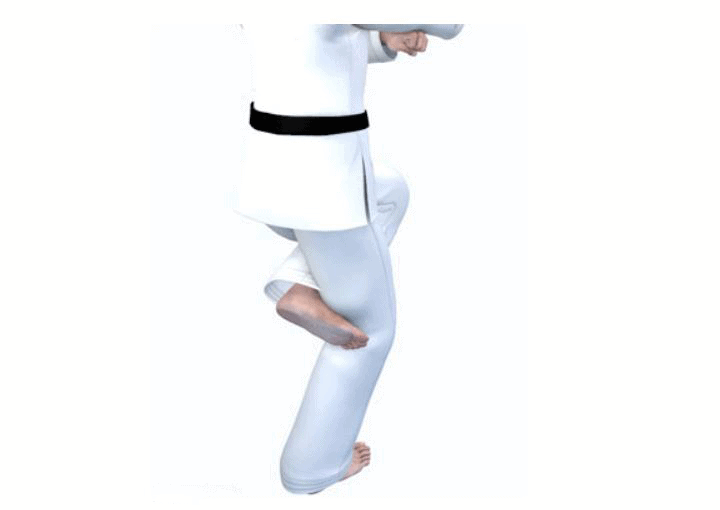
As soon as you lift your foot off the floor, place the upper part of your foot into the fossa poplitea of your opposite leg. Bend your knees, lower your body, and your front foot facing forward. You can also see it in black belt forms, the Korean name for the inner knee stance is 오금서기 (ogum-sogi).
FIGHTING STANCE
Have you ever seen Hwoarang in Tekken? He is an example of a perfect Taekwondo fighting stance.
This stance varies from the fighter, but there are a few common points – body turned sideways, legs are slightly bent. Hands should be up to protect the head, and elbows slightly bent, while feet are about two shoulder widths apart. The Korean name is 겨루기준비 (gyeorugi-junbi).
OVERLAPPED HAND POSTURE
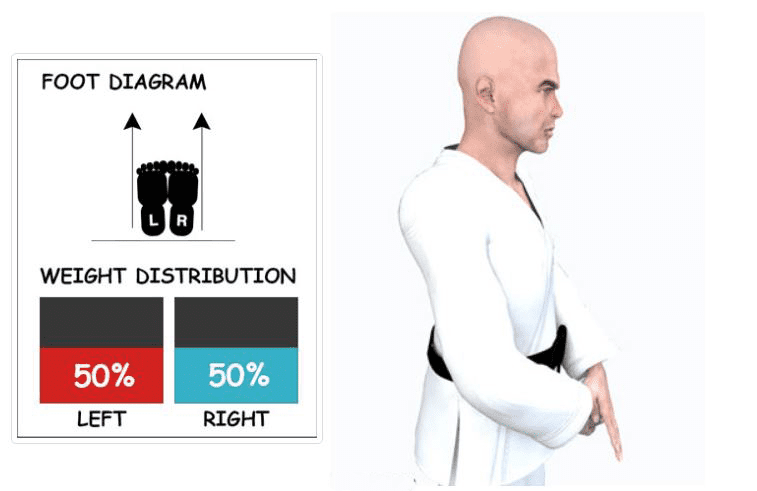
Even weight distribution, feet shoulder width apart, both hands overlapped across each other in the level below the belt. The left hand is on the top of your right hand, fist size distance between your arms and belly. The Korean name for overlapped hand posture is 겹손준비 (gyeopson-junbi).
LOG PUSHING POSTURE
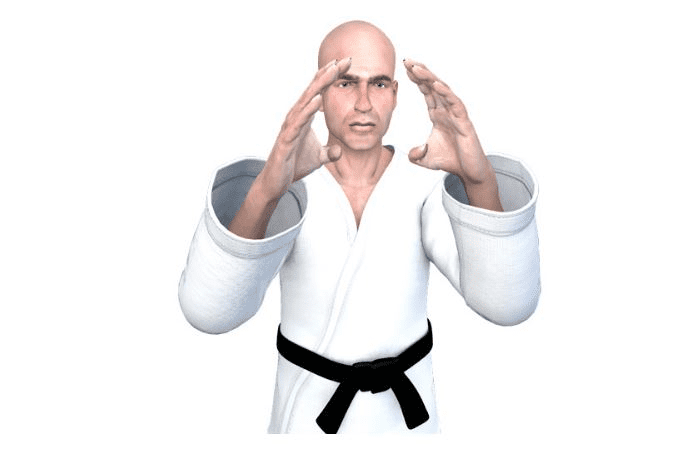
An advanced stance for masters of martial arts. Your fingers are at the level of your eyebrows and lips, imagine you’re pushing a lot with your palms while slowly breathing in. The Korean name for log pushing posture is 통밀기준비 (tongmilgi-junbi).
ASSISTING STANCE
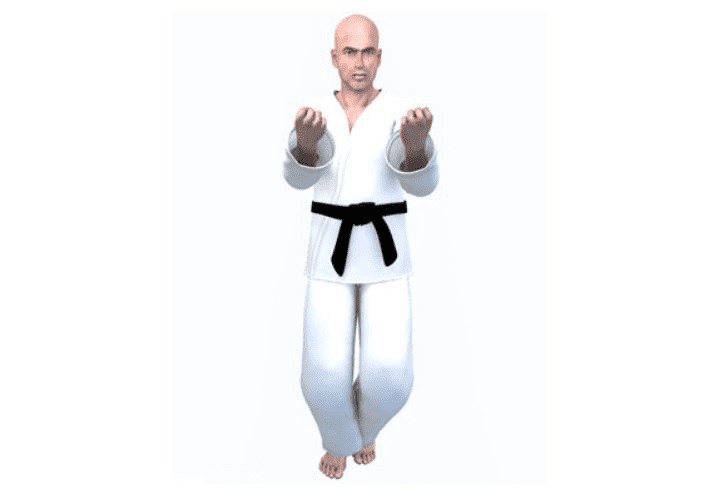
Bend both knees and lower your center of gravity. Clench your fists rotating them towards the sky and putting them at the level of your shoulders, and bend your elbows. Shift the center of balance on your front foot. The heel of your rear foot is lifted off the ground. The Korean name for assisting stance is 곁다리서기 (gyeotdari-sogi).
DIAGONAL STANCE
If you want to stay away from your opponent when both of your feet are turned diagonally, this might be your perfect choice. Distribute the center of gravity evenly between both legs, and slightly bend your front knee and rear knee. The Korean name is 모서기 (mo-sogi).
AT EASE STANCE
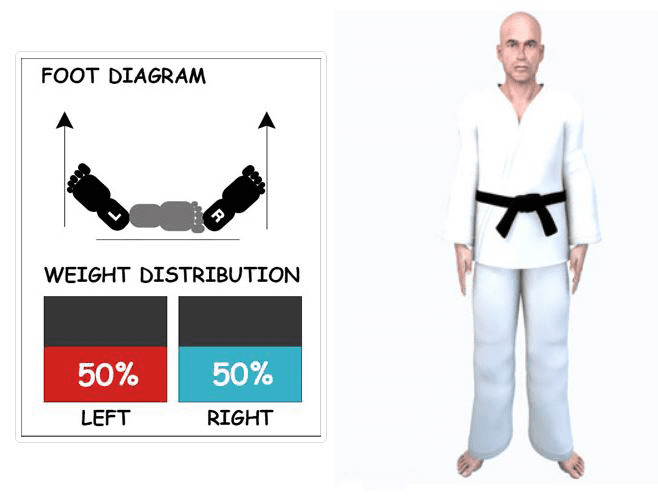
One of the easiest Taekwondo stances. Legs shoulder width apart and straight, eyes look forward, hands relaxed next to your body, toes facing outwards. It is also known under the name of 편히서기 (pyeoni-sogi).
INWARD STANCE
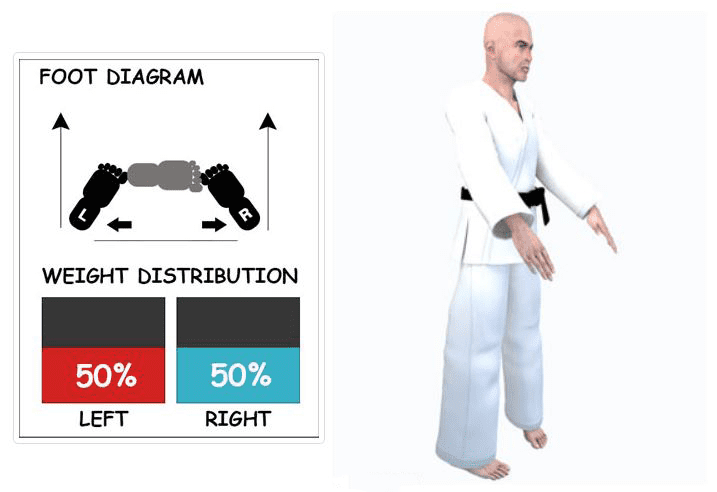
Similar to the previous form, at ease stance, with two significant differences – the inner edge of both feet is about one foot-length apart and the toes are facing inwards. The toe-toe distance is shorter than a heel-heel distance, with legs shoulder width apart. Also known under the Korean name 안쫑서기 (anjjong-sogi).
FORWARD RIDING STANCE
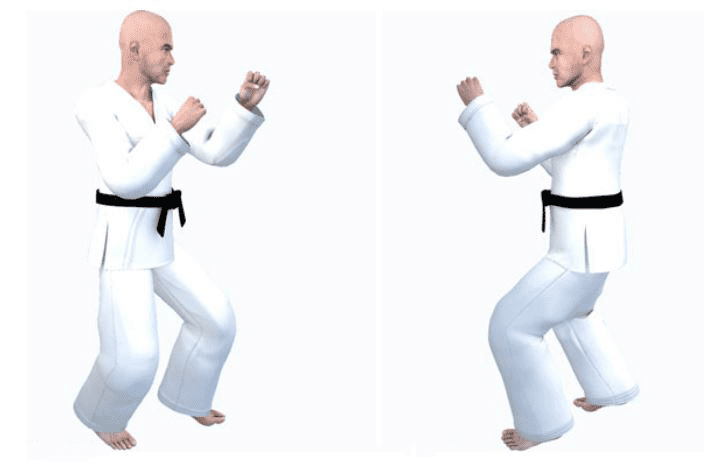
It is a form of a fighting stance where you lift the heels and slightly bend your legs. Raise your hands into the guard to protect your face. It is also known under the Korean name 앞 주춤서기 (ap-juchum-sogi).
BENDING READY STANCE
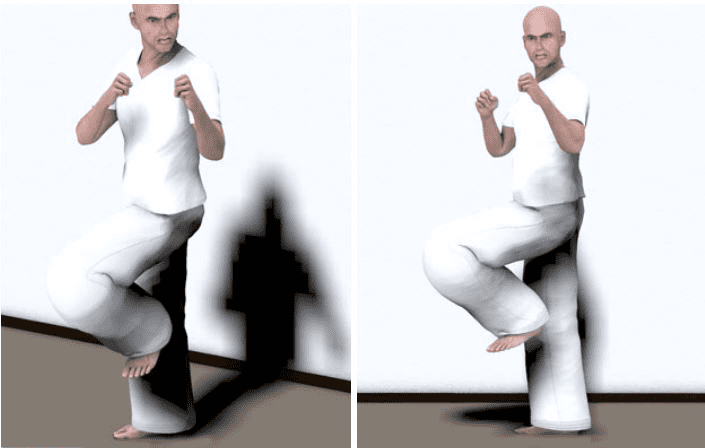
This stance can be seen in International taekwondo federation (ITF) forms, and it’s pretty much a good choice if you’d like to land a side-kick.
Lift the left foot to the level of the opposite knee and place its reverse blade close to the inner area of the knee. Lifted knee faces sideways, while e body is pointed forward. The Korean name for bending ready stance is goburyo-sogi.
